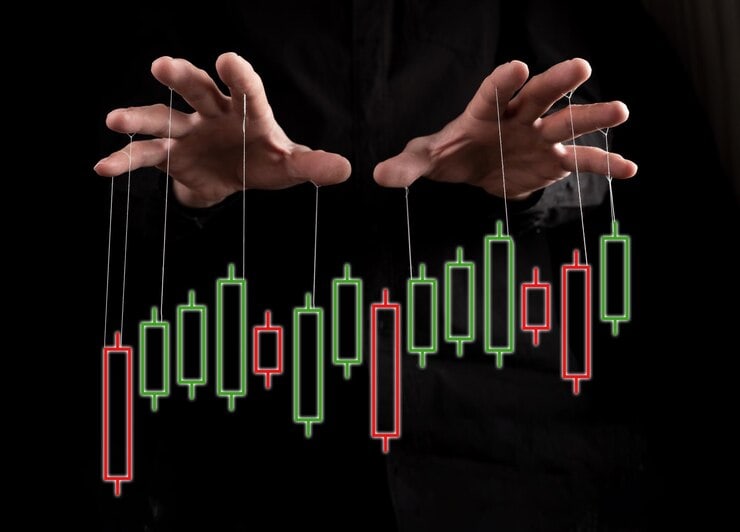The foreign exchange (forex) market is a complex ecosystem where currencies don’t move in isolation. Often, currencies exhibit correlations, Read More
meaning their price movements tend to be linked. This relationship can be positive (move in the same direction) or negative (move in opposite directions). Understanding these correlations can be a powerful tool for forex traders, helping them make informed decisions and potentially enhance their trading strategies.
The Symphony of Currencies: Exploring Correlation Types
Currency correlations arise from various factors, including:
- Economic Ties: Countries with strong economic ties, such as trading partners, often experience correlated currency movements. For example, the US dollar and the Canadian dollar tend to have a positive correlation due to their significant trade relationship.
- Monetary Policy: Central bank actions, like interest rate adjustments, can influence exchange rates of related currencies. For instance, if the US Federal Reserve raises interest rates, it might strengthen the US dollar relative to currencies pegged to the dollar or those with lower interest rates.
- Investor Sentiment: Market sentiment towards a particular region or asset class can affect multiple currencies. For example, a risk-off environment might lead investors to seek safe-haven currencies like the Japanese yen, strengthening it against other currencies.
There are two main types of currency correlations:
- Positive Correlation: When two currencies exhibit a positive correlation, their prices tend to move in the same direction. For example, if the euro strengthens against the US dollar (EUR/USD rises), the Swiss franc (another safe-haven currency) might also appreciate against the dollar (CHF/USD rises).
- Negative Correlation: When there’s a negative correlation, the price movements of two currencies tend to be in opposite directions. For example, the US dollar and the price of oil often have a negative correlation. When oil prices rise, the US dollar might weaken as investors seek alternative assets.
The Power of Correlations: How They Can Enhance Your Trading
Understanding currency correlations can benefit forex traders in several ways:
- Identifying Trading Opportunities: By recognizing correlated currency pairs, you can potentially identify trading opportunities. For example, if you believe the euro will strengthen against the US dollar, you might also consider entering a long position on a positively correlated currency like the Swiss franc.
- Hedging Risk: Correlations can be used for hedging purposes. If you hold a long position on a particular currency, you could take a short position on a negatively correlated currency to mitigate potential losses.
- Market Confirmation: Understanding correlations can help confirm your analysis. If your fundamental analysis suggests a currency appreciation, and the correlated currency also exhibits signs of strengthening, it can add confidence to your trading decision.
Beyond the Basics: Measuring and Utilizing Correlations
To effectively utilize correlations in your trading strategy, consider these steps:
- Measure Correlation Strength: Correlation coefficients, ranging from -1 (perfect negative correlation) to +1 (perfect positive correlation), quantify the strength of the relationship between two currencies. However, keep in mind that correlations are not always perfect and can change over time.
- Historical Analysis: Analyze historical price data to identify patterns and assess the strength and consistency of correlations between currency pairs.
- Diversification: Incorporate a combination of positively and negatively correlated currencies into your portfolio to potentially manage risk and enhance its overall performance.
- Don’t Rely Solely on Correlations: While correlations can be valuable, they are just one piece of the puzzle. Always consider fundamental and technical analysis alongside correlation studies when making trading decisions.
The Dynamic Landscape of Currency Correlations
The world is constantly evolving, and so are currency correlations:
- Economic Events: Major economic events, like trade wars or political instability, can disrupt existing correlations and introduce new ones.
- Central Bank Policies: Changes in central bank policies, like interest rate adjustments, can impact the relationship between currencies.
- Technological Advancements: Technological advancements can influence global trade patterns and economic ties, potentially altering established currency correlations.
The Final Note: Correlations – A Tool for Informed Trading
Understanding currency correlations is not about predicting the future; it’s about gaining valuable insights into how currencies interact. By incorporating correlation analysis into your trading strategy, you can make more informed decisions, identify potential opportunities, and navigate the complexities of the forex market with greater confidence. However, remember that correlations are not foolproof, and a comprehensive approach that considers fundamental and technical analysis is crucial for long-term success in forex trading.

